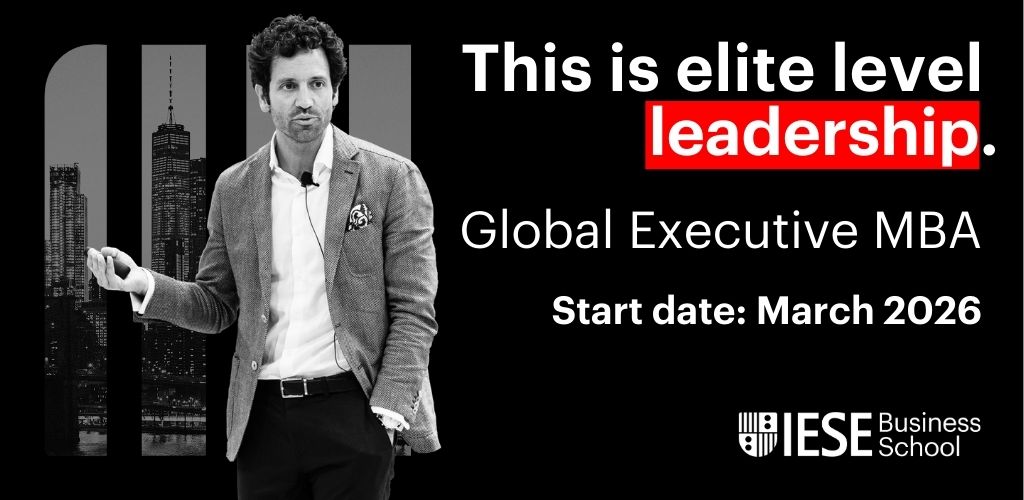
IESE Insight
Taylor-made strategy: lessons in competitive strategy from Taylor Swift
Taylor Swift’s rise to global superstar is a case study in competitive strategy. Her story serves to highlight the strategic choices one needs to consider to sustain competitive advantage in a dynamic environment.
Taylor Swift’s Eras world tour, which came to an end in December 2024, was the highest-grossing music tour of all time. The singer has a net worth of $1.6 billion — and counting — making her the richest female musician in the world. How did this aspiring teenage singer-songwriter end up becoming the influential megastar she is today?
In the case study “Unlucky 13? The journey of Taylor Swift to stardom,” IESE Prof. Pascual Berrone uses Swift’s career journey to chart the path to business success. Her story illustrates fundamental concepts of competitive strategy — such as positioning, differentiation, value creation and value capture — and shows the role that industry dynamics and branding play. In reflecting on her stellar career, business leaders may glean useful insights into how success is achieved, the different ways it can be measured, and which factors contribute to bolstering and sustaining it over time.
1. Differentiation
To start, you have to make your offer stand out from the crowd. This entails a creative combination of internal and external factors.
Having innate talent (internal factor) is a boon. Swift is a gifted singer, but she is also a talented songwriter — a rarer combination. Her emotionally honest songs connect with fans in a way that feels authentic, rather than being just another manufactured one-hit wonder.
In addition to having a singular offer, Swift also has a keen understanding of how the music industry works (external factor). As social media platforms emerged over the years, she was quick to leverage them to connect with her fans on a personal level, building a global fanbase. She was also able to draw upon a wider support system of family and a professional team, both of whom have carried her through to this day.
Luck may play a role: indeed, people often credit “a lucky break” to explain why they succeeded where other equally talented people didn’t. However, there’s no denying that without strategic judgment, personal resilience, industry knowledge and a solid support system, luck alone is not the deciding factor.
IESE entrepreneurship professor Christoph Zott thinks “luck” is a myth: “Who is lucky all the time? Nobody. In fact, many entrepreneurs are extremely unlucky. Unfortunate things happen to them, yet they are still successful. So it cannot all be down to blind luck. Rather, entrepreneurship is a process. And the good thing about processes is, you can learn how to run them; they can be managed and improved.”
So, ask yourself: How do you differentiate yourself from competitors? Which external factors can you leverage to help your business go to the next level? And how can you improve your “luck” — that is, which things could you manage better to turn the odds in your favor?
2. Building and growing
The next key concepts to grasp are value creation and value capture. Songwriting, as mentioned, has been a key source of her value creation. Fans relate to her lyrics, and she often drops “Easter eggs” into her songs or social media posts — hidden references that only her most ardent fans and followers will get, so they feel like they are in on the inside joke.
3. Overcoming challenges
Allied to this is capturing the value you create. You don’t want someone else to profit off all your hard work, cannibalizing your success or losing out to imitators.
This came to the fore when Swift clashed with Spotify, Apple Music and other music streaming platforms over artists’ rights and compensation, as well as her being unable to obtain the rights to the master recordings of her early songs, which were owned by the record label she had signed with. To take back control, Swift proceeded to re-record her early albums and re-release them as “Taylor’s version.” Her fans duly bought from her rather than buy from the original label, making sure the credit and revenue stayed in her hands. (Outmaneuvered music labels are now including clauses in artists’ contracts stipulating they can’t re-record their work till long after their contract ends.)
Swift also creates value through her concerts, although the amount she personally captures is limited because there are physical and practical constraints when it comes to concerts on such a grand, international scale. When demand is high but supply is constrained, the obvious means of capturing additional value would be to raise ticket prices, but Swift opts to keep prices as accessible as possible for her fans.
This trade-off will be familiar to many business leaders who must strike a similar balance in terms of their offer and their customer base.
4. Sustaining success
In 2023, Swift was named Time magazine’s Person of the Year for “spinning her story into a global legend, for bringing joy to a society desperately in need of it.” This recognizes her uncanny ability to perpetually reinvent herself. Her move from country music to pop was as much a strategic choice as a stylistic one, broadening her audience and appealing to new market segments.
Swift has cultivated an extremely loyal fanbase — Swifties — whom she engages with via social media, rallying them for a variety of social and political causes, and encouraging them to vote. Her endorsement of Kamala Harris in the 2024 U.S. presidential race drew the ire of Donald Trump, who had previously shared AI-generated images of her manipulated to imply she supported him. The images “conjured up my fears around AI and the dangers of spreading misinformation,” she wrote on Instagram. Certainly, AI deepfakes represent a new and growing threat that she and others in the public eye are increasingly having to deal with to safeguard their reputations.
This underscores that strategy is a non-stop process of analyzing current market conditions, envisaging where you want to be, and then taking appropriate actions in alignment with your core values. And as you keep innovating to evolve with changing markets and tastes, you have to stay on top of which factors could become destabilizing, doing all you can to safeguard the integrity of your brand and make sure your legacy endures.
A version of this article appeared in Forbes as well as being published as an infographic in IESE Business School Insight magazine #169 (Jan.-April 2025).



